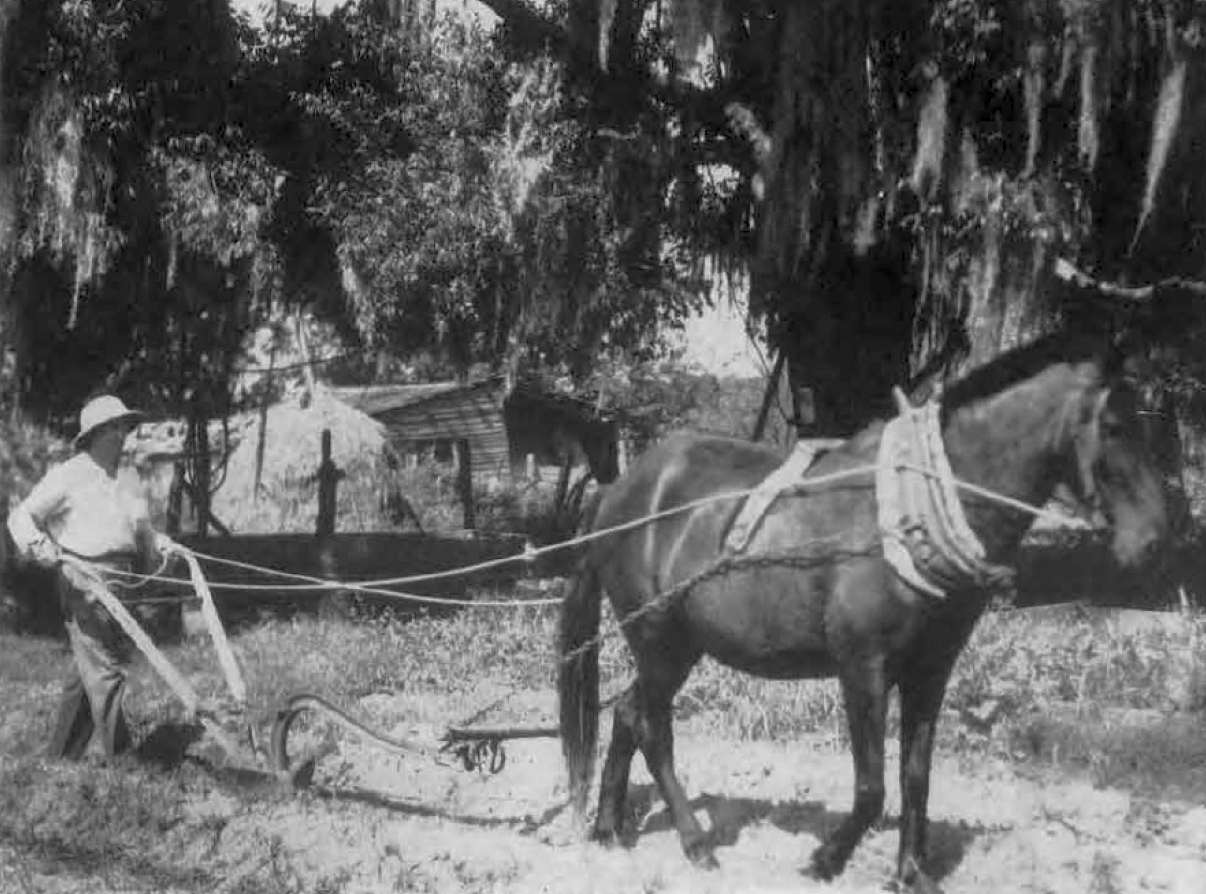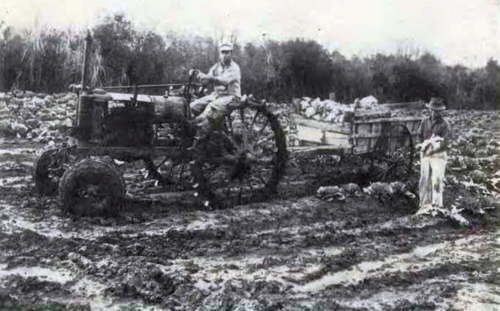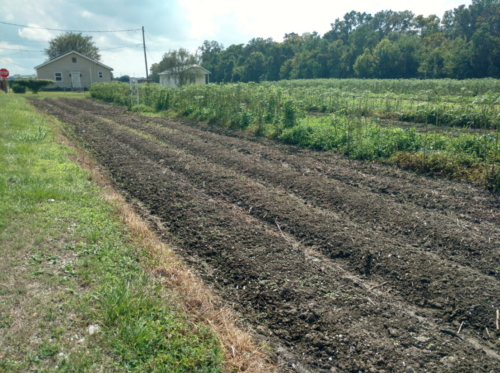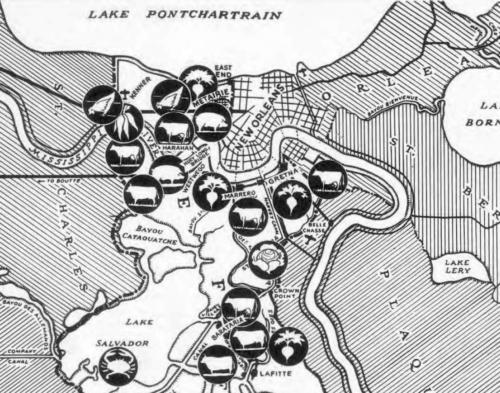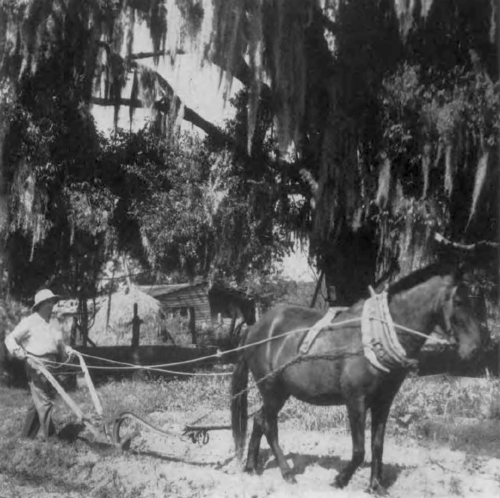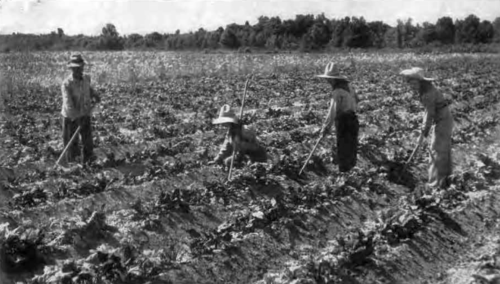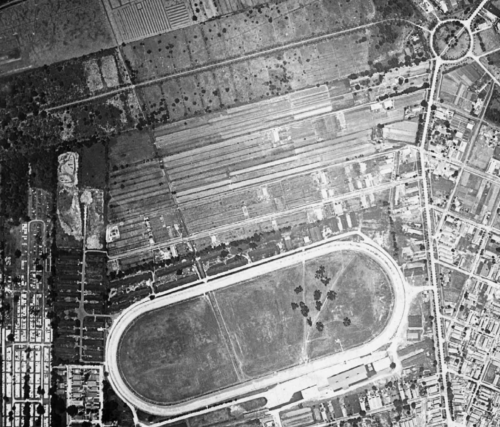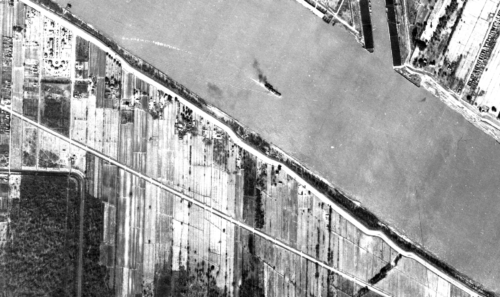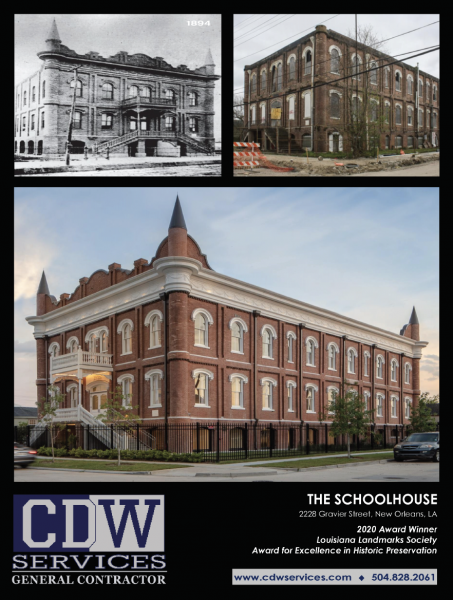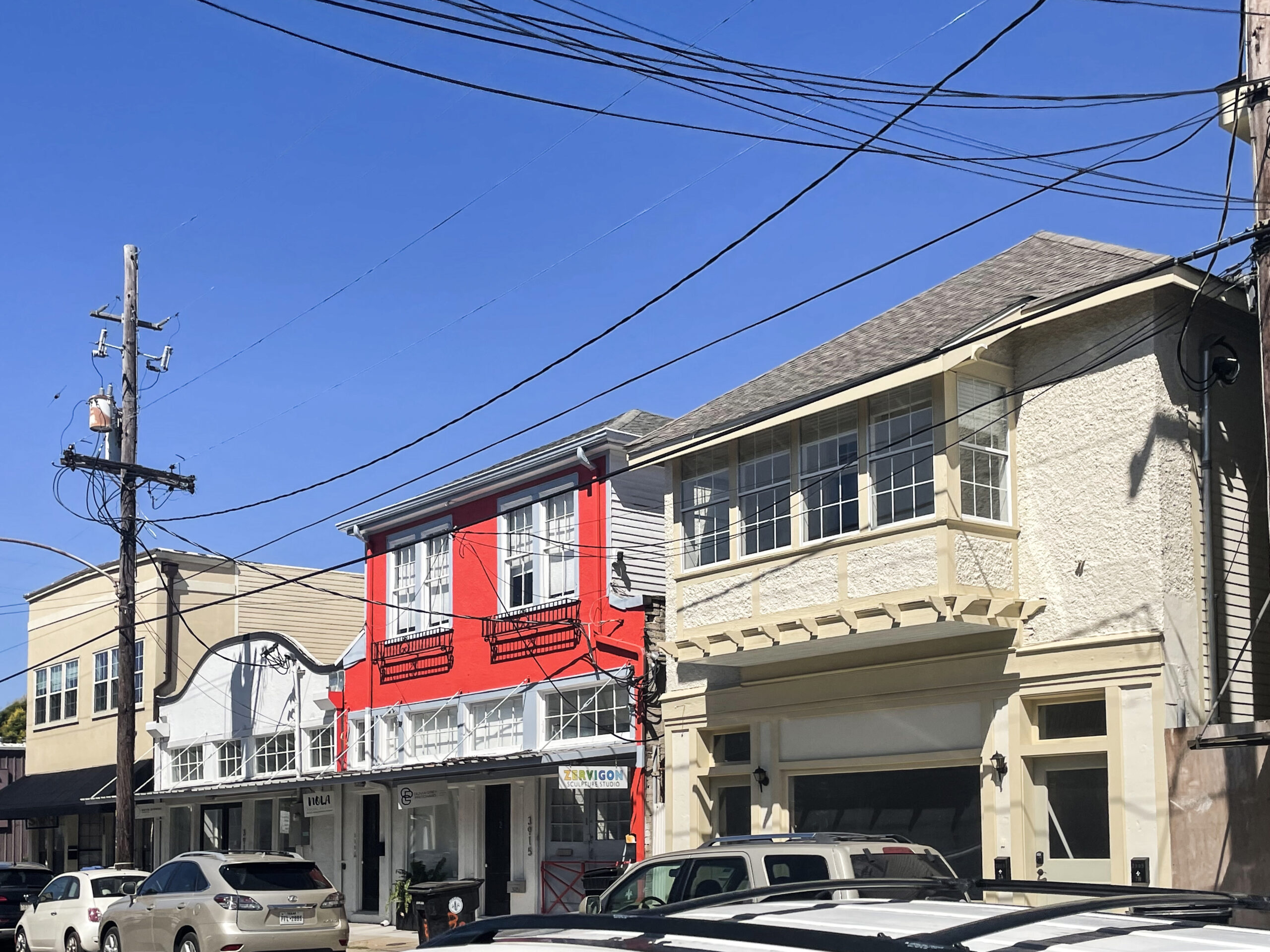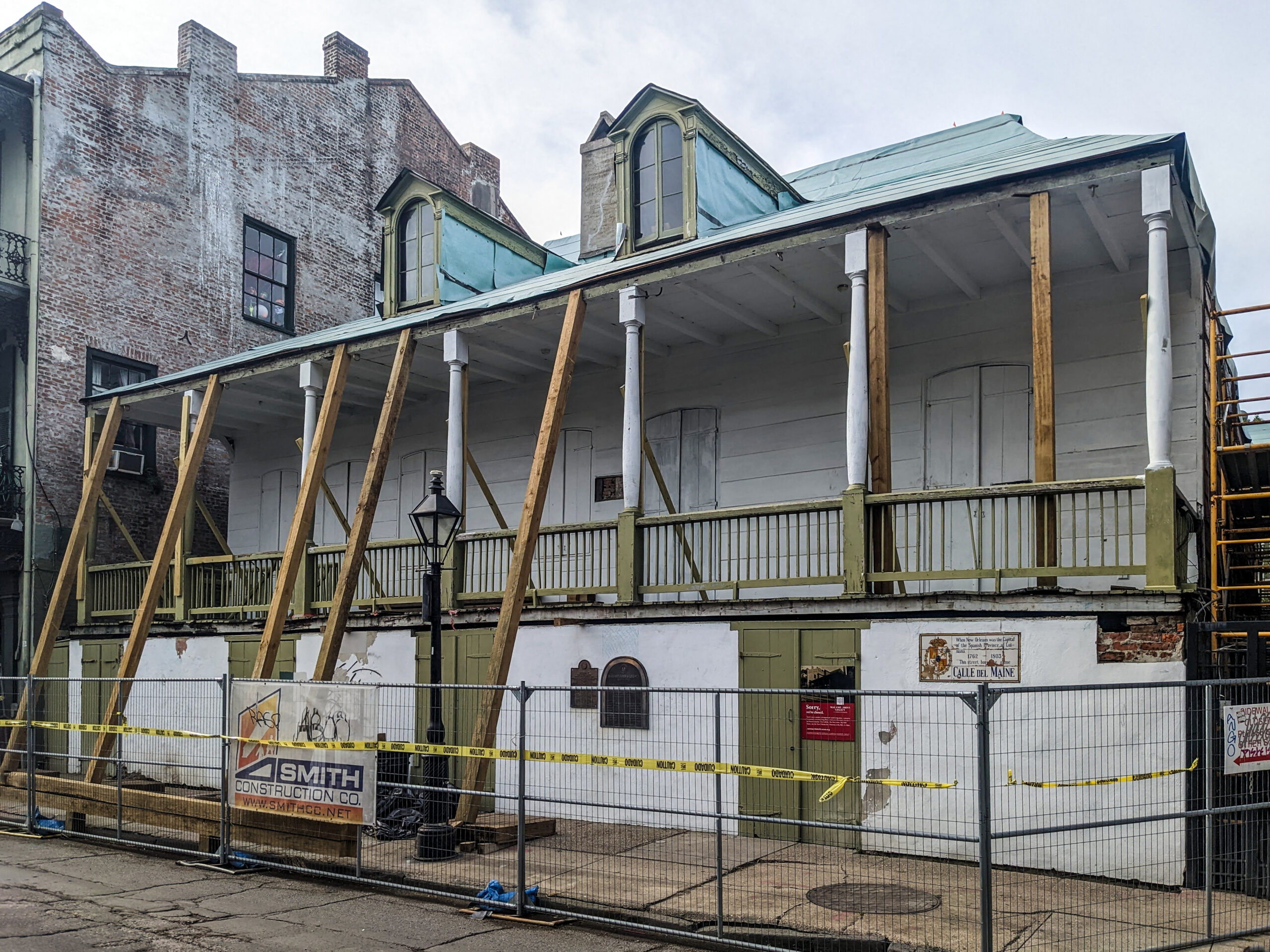This article originally appeared in The Times-Picayune in 2020 and was republished in the November issue of PRC’s Preservation in Print magazine. Interested in getting more preservation stories like this delivered to your door? Become a member of the PRC for a subscription!
They abounded in Gentilly. They checkerboarded Marrero. They are eponymous with Metairie.
“They” were truck farms, and from the 1870s to the 1950s, their crop-lined fields dominated the fringes of greater New Orleans, from Arabi to Marrero, from Algiers to Kenner.
A truck farm is a small agricultural enterprise devoted to raising vegetables, fruit, dairy and other delicate edibles. “Truck” comes not from the vehicle they were transported in — yet to be invented in the late 1800s — but from the French troquer, meaning exchange or barter, as many such farmers traded their yield at the town market.
Truck farms were sometimes known as market gardens, and their bounty fed both the family and as well as the local community. “Truck” came to be synonymous with fresh fruit and vegetables.
Historically, truck farms arose in fertile areas too remote for urbanization, yet close enough to urban areas such that growing food for city dwellers made more economic sense than raising cash crops for export. Fragile foodstuffs such as leafy greens, tomatoes, milk and eggs had to be grown near consumers to ensure fresh delivery.
In New Orleans during late antebellum times, truck farms could be found throughout present-day Uptown up to Kenner, in the lower faubourgs and down to St. Bernard Parish, and throughout the West Bank.
Some were privately owned family farms, particularly those along narrow topographic ridges, such as Bayou Road, Gentilly Road (now Boulevard) and Metairie Road (métairie means a small farmstead).
Advertisement
Others occupied parcels within larger plantations, so what often got described simply as “a sugar cane plantation” was actually a multi-use operation where leaseholders cultivated vegetables and orchards, raised poultry, milked cows, and grazed cattle or sheep on smaller parcels.
The heyday of the truck farm came after the Civil War. Emancipation forced plantation owners to find alternative labor sources, and if they couldn’t, they often subdivided their once-vast holdings and leased the farmsteads to formerly enslaved families. Truck farmers were predominantly African American in many parts of the South.
Some truck farmers saw potentially higher prices by selling to distant cities. According to a 1919 report, “The first shipment of truck from New Orleans to the North was about 1866, being sent by boat to Memphis and St. Louis.” The problem was transportation: vessels moved slowly, and the produce often rotted en route.
But “when the railroads and express companies furnished adequate facilities for forwarding shipments to distance markets, truck farms sprang up like mushrooms[,] and New Orleans became the center for an intensive agriculture.” Refrigeration cars were developed in the 1880s, for which local firms started making ventilated boxes, crates and specialized barrels packed with locally manufactured ice.
Demand for truck increased in part because cities were growing — New Orleans nearly doubled in population in the 50 years following the Civil War— and also because eating habits were changing, as Americans began incorporating more fruits and vegetables into their standard diet of meat, potatoes and grains.
With its balmy climate and expanding rail network, the South became ideal for growing produce. Truck farming became a decent way for rural families to scrape out a living, and they appeared wherever good soil, rail lines and/or cities spatially coincided.
Photo 1: January harvest of cabbages on a Jefferson Parish truck farm in 1951. Image courtesy of the Jefferson Parish Yearly Review. Photo 2: Last remaining truck farm on Berger Street in Marrero. Photo by Richard Campanella. Photo 3: Map of food production in Jefferson Parish in 1943. Image courtesy of the Jefferson Parish Yearly Review.
The immigrant role
Closer to New Orleans, immigrants often took to truck farming, many of them having been recruited to replace enslaved labor after the Civil War.
In 1870, in what is now Marrero, more than 140 Chinese laborers arrived at the Merrill Plantation, part of an attempt to build a new workforce in agriculture and railroad construction.
Within a few weeks, things went awry, as the Chinese laborers found their contracts to be exploitative and argued for their right to grow their own vegetables. In what a reporter described as “The Cabbage Revolt,” most workers soon abandoned the plantation for other opportunities, including becoming independent truck farmers.
By the 1890s, a hamlet of Chinese gardeners operated a truck farm at what is now the West Bank end of the Crescent City Connection. “Just back of the Southern Pacific Railway track, a short distance above Gretna,” wrote the Times-Democrat, is “probably the only Chinese market garden to be found in Louisiana, and one of the most important of its kind in America…. It consists of sixteen acres of very rich, low-lying soil, leased…by the Ti Kee Company of Gretna, La. (and producing) Chinese vegetables, (for) the Chinese inhabitants of this city and [shipping] to New York, Boston, Chicago, St. Louis,” and beyond. The Ti Kee truck farm yielded profits as high as $2,000 a year, or close to $60,000 in today’s dollars.
Louisiana planters also turned to Sicily to recruit field laborers. Like their predecessors, many Sicilians found themselves displeased with work conditions and broke off to establish their own truck farms in places like Kenner, St. Bernard Parish and the West Bank.
Sicilian families came to dominate the stalls of municipal emporia such as the French Market, such that kin and kith controlled both the production and distribution ends of the truck business. Other brethren settled across the lake in Tangipahoa Parish and raised specialty crops like strawberries, as they do to this day.
Truck farming became an intermediary phase in the transformation of greater New Orleans’ landscape, after the plantation era and before modern suburbanization. The patchwork of farms further expanded as pumping systems were installed to drain swamps in the 1910s, to the point that they stretched along Gentilly Boulevard and the Old Gentilly Road into New Orleans East, and covered much of the higher ground on the West Bank, from 4th Street to what is now Lapalco Boulevard.
Photo 1: In this photo from 1955, Sido Warino ploughs his truck farm near what is now Barataria Boulevard. Image courtesy of the Jefferson Parish Yearly Review. Photo 2: The Balestra family shown working their Jefferson Parish truck farm in 1943. Image courtesy of the Jefferson Parish Yearly Review.
A genuine industry
According to an estimate by the Daily Picayune in 1900, “about 1,000 gardens and truck farmers (operated) in the parish of Orleans, cultivating about four to five city lots up to twenty-five acres each.” Larger farms could be found throughout “the whole lower coast for fifty miles below the city, on both sides of the river.”
Most harvests sold locally, but “twenty to thirty carloads daily” shipped nationwide, coordinated by “representatives from commission houses in all these cities.” Truck farming was big business — comprising lots of small businesses — and the “trucking industry…valued at millions of dollars annually” supported hundreds of additional jobs in what today would be called B2B (business to business) firms. “There are now several ice companies and cooperages that supply ice and barrels to the shippers,” reported the 1919 source. “Vegetables sent great distances (now) reach their destination in perfect condition.”
Though they were independent, truck farmers formed cooperatives to buy down costs, leverage better shipping rates and reduce marketplace volatility. The Jefferson Parish Purchasing and Marketing Association in Gretna, for example, enabled members to pack oranges and buy insecticide more effectively than if they did so individually. In Tangipahoa Parish, cooperatives auctioned strawberries at higher prices and purchased fertilizer at lower prices, while in Kentwood, the Dairy Farmers Cooperative Association operated as a “bargaining agency for producers selling milk in the New Orleans milkshed,” according to a 1945 federal report.
Advertisement
Truck farming raised the value of land where urban development had not yet reached. In places like Little Woods and Michoud in eastern New Orleans, truck farms went for up to $2,500 per acre, and, according to a 1910 source, could yield up to $500 monthly growing “celery, asparagus, artichokes, cauliflower, lettuce, string beans, cucumbers, tomatoes, eggplants, radishes, beets, turnips, peas, onions, Irish and sweet potatoes, sweet corn, peppers, vegetable pears (mirlitons), watermelons, cantaloupes, pumpkins, squash, strawberries” as well as orchards of “oranges, mandarins and tangerines.”
Truck farming even became part of a Depression-era housing, jobs and food-production strategy. In 1932, the Oakdale Tract, along the Algiers/Gretna line, was subdivided into “small farm homes” designed for, according to The Times-Picayune, “the city worker to cut living expenses by raising…vegetables, fruit, berries or chickens, pigs and a cow.” Dozens of two- to three-acre farming homesteads operated in Oakdale into the 1950s, practically within sight of downtown high-rises.
In 1951, fully 110 truck farms operated just within Orleans Parish, averaging more than 74 acres in size and yielding more per acre than any other parish. Ten were in lower Algiers, and among their owners were members of the extended Pittari family, who “lived well — what with chickens, eggs,” a wide variety of vegetables, “corn[,] beef cattle, milk, [and] hogs, [all] right on their farm,” all of it sold at “a comfortable profit [at] the French Market.”
Family members did all the labor, usually with tractors but sometimes with mules or horses. “It is hard to beat this land,” marveled the family patriarch to the New Orleans States. “We live good [and] have as much money as [with] a very good job. It is a good life.”
Truck farms near the Fairgrounds and DeSaix Place in 1920s Gentilly. Photos provided by Richard Campanella.
Changing Times
That “good life” is largely gone from the modern metropolis, yet it manages to persist on the outskirts. Places like Belle Chasse, St. Bernard Parish and the River Parishes are known for their Creole tomatoes, and Plaquemines and Tangipahoa parishes remain famous for their citrus and strawberries, respectively.
Within city neighborhoods, enthusiastic young “urban farmers” grow greens on vacant lots through organizations such as SPROUT NOLA, Growing Local NOLA and the Recirculating Farms Coalition. Others, such as the Grow Dat Youth Farm in City Park, aim to cultivate future leaders by teaching gardening as meaningful work. Weekly farmers’ markets have since proliferated, as has an appreciation for local sourcing.
But there is no question that the metro-area farming industry is a fraction of what it once was, for various interrelated reasons.
For one, the “green revolution” of the 1950s and 1960s introduced fertilizers, herbicides, genetic research and mechanization to agriculture. Yields increased dramatically on ever-expanding operations, as big businesses overtook family farms, and as government subsidies stabilized market volatility.
At the same time, the interstate highway system gave rise to cross-country refrigerated trucking, which could efficiently deliver produce from places like California’s Central Valley to chain supermarkets nationwide. Modern air transport and containerized shipping globalized the trade.
Truck farms on the margins of American cities could not compete, particularly as their acreage became far more valuable for suburban development.
The truck farms of eastern New Orleans became the failed corporate development called New Orleans East, Inc. Those in old Amesville became suburban Marrero, and those of lower Algiers became New Aurora and Woodland Estates. Gentilly’s truck farms went from crops to houses between the 1920s and the 1940s, and Kenner’s did the same over the 1950s and 1960s.
Most public markets in New Orleans closed by the early 1960s, and in 1973, the French Market switched from operating as a farmers market to the festival market it is today. Consumers by this time “made groceries” in supermarkets, and no one called fruits and vegetables “truck” anymore.
But for those who lived the truck farm life, the memories are vivid — and recent.
Pearl Forbes, born in 1944 and now a resident of Algiers, grew up in Oakdale, that West Bank farmsteading community by the Orleans/Jefferson parish line. Along with five families who rented adjacent houses, Forbes’ family raised vegetables, corn, figs, lemons, pumpkins, watermelons, plantains and sugar cane, along with hogs and chickens. Some of the produce went to the family dinner table; the rest went to the family store. “We were never hungry,” she wrote me of her childhood years.
After the bridge opened in 1958, the farmsteads of Oakdale became Terrytown and the Fischer public housing complex, and hardly a trace of them remains today.
Over in Marrero, however, may be found one of the very last old family truck farms still operating within the heart of the metropolis. Danny Palmisano, 54, has been farming a few acres along Berger Street since he was 7, helping his father raise vegetables on land his family had first purchased in 1918 — 60 acres for $1,500. Most of that land has since been developed, but he has held on to a few acres, where, using three tractors, he raises okra, greens and cabbages for sale to local folks, stores and roadside stands. He lives onsite.
Palmisano’s was one of many Italian farming families in and near Marrero, who wholesaled to relatives at the French Market, who in turn retailed to customers. Some farms lasted until a few decades ago, and Palmisano remembers one operation that used a mule into the 1980s, within sight of modern subdivisions along the West Bank Expressway.
“Times have changed, technology has changed; it’s hard to make a living doing this,” Palmisano told me, acknowledging that he’ll probably be the last in his family to farm this land.
“But I enjoy it…. I like to see a seed grow, to become a plant, to become food.”
Richard Campanella is a geographer with the Tulane School of Architecture and author of The West Bank of Greater New Orleans; Cityscapes of New Orleans; Bourbon Street: A History; and other books. Campanella may be reached through richcampanella.com, rcampane@tulane.edu, or@nolacampanella on Twitter.
Advertisements




